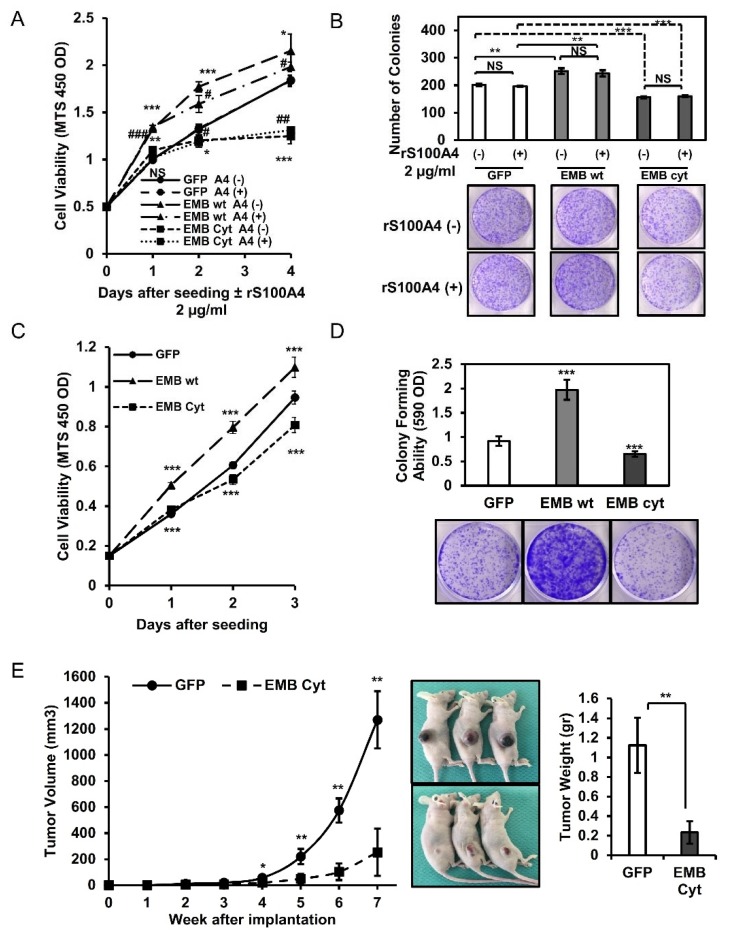Figure 5.
The intracellular cytoplasmic tail of embigin is vital for prostate cancer cell growth in vitro and in vivo. (A,B) DU145 cells transiently overexpressing GFP, embigin wild-type (wt), and the cytoplasmic tail of embigin (EMB Cyt) stimulated with 2 µg/mL of rS100A4 were evaluated by the MTS assay (A) or colony formation assay (B) (n = 3). (C,D) DU145 cells stably overexpressing GFP, embigin wild-type (wt), and the cytoplasmic tail of embigin (EMB Cyt) were evaluated by the MTS assay (C) or colony formation assay (D) (n = 6). DU145 cells overexpressing embigin wild-type showed increases in growth rate and colony-forming ability, whereas overexpression of the cytoplasmic tail of embigin inversely suppressed growth rate and colony-forming ability compared with those of GFP-control cells. (E) An in vivo growth assay showed significant decreases in the volume (left panel) and weight (right panel) of tumors with DU145 cells stably overexpressing the cytoplasmic tail of embigin compared with those of tumors with GFP-control cells (n = 3 mice per group). Data are presented as means ± SD. NS, not significant; * p < 0.05; ** p < 0.01; *** p < 0.001, Student’s t test.

